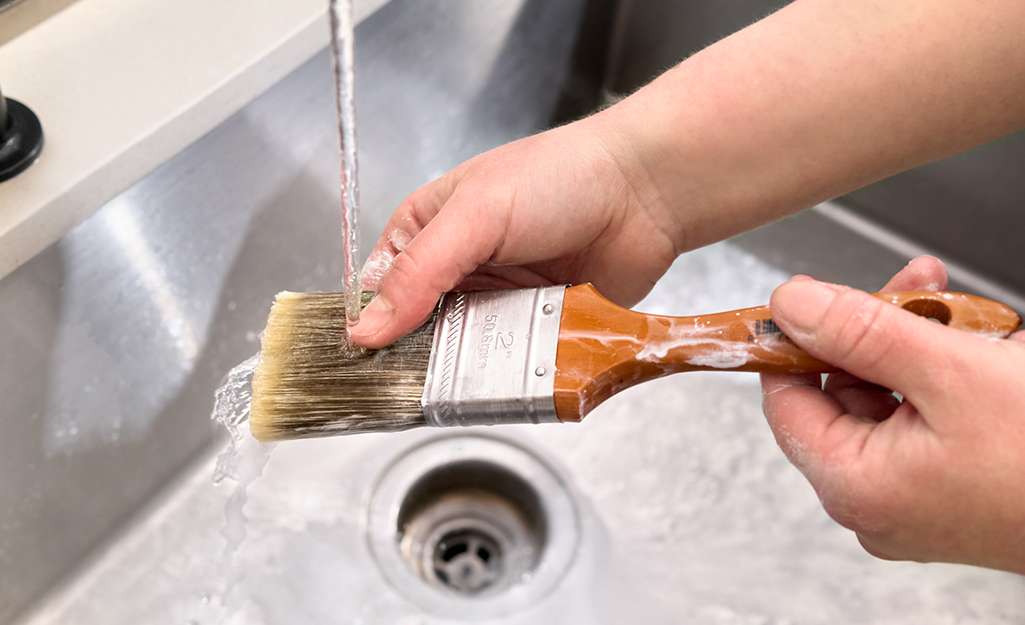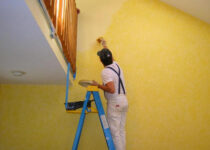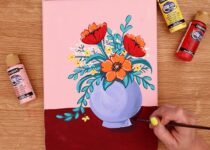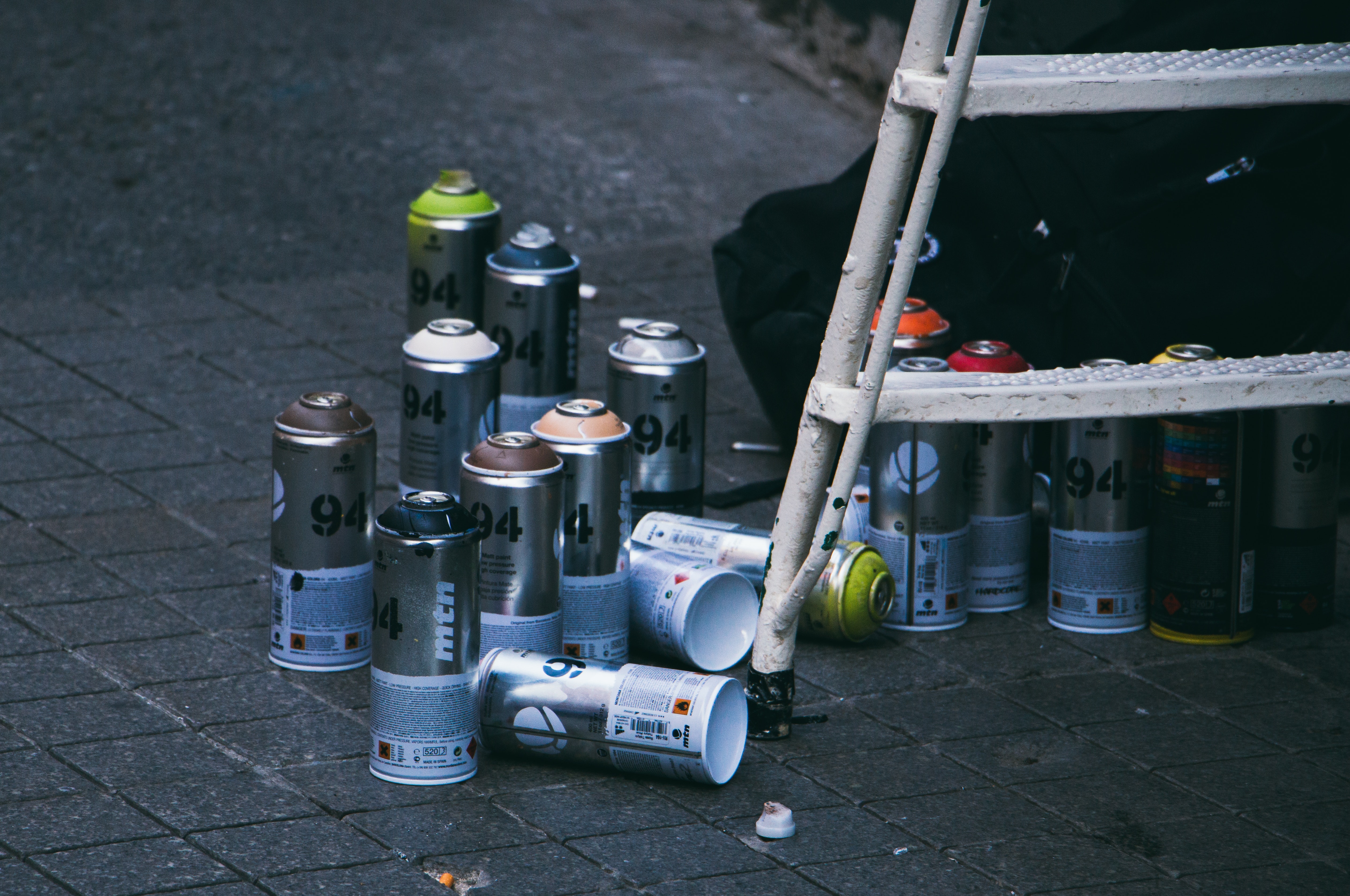How to get dried acrylic paint out of brushes
Any painter or artist will tell you that washing brushes are the portion of clean-up that takes the most time. Because acrylic paint dries to such a solid state, using just water to clean acrylic paint brushes is insufficient to remove all that needs to be removed that’s why we have come up with how to clean dried acrylic paint out of brushes easily here.
You’re in luck; in this article, we’ll walk you through some straightforward techniques and suggestions for cleaning acrylic paint brushes so that you may become an expert painter.
Cleaning Acrylic Paint Brushes
When it comes to cleaning your paintbrushes, there are a few things that you need to keep in mind. The kind of paintbrush and media will determine the techniques that you employ that you use. In this piece, we will discuss the brushes most suited for use with acrylic paints and the methods that should be used for cleaning them.

Paintbrush Type
Paintbrush bristles and handle materials may be found in many options. Brushes come with various bristles, such as oil, watercolour, and acrylic. Brush bristles may be made from either natural hair or synthetic fibres. Natural hair paintbrushes are often made from hog, badger, or weasel hair. That’s why you’ll notice a difference in texture and rigidity between synthetic and natural brushes.
Natural brushes are the best option for painting with chemical paints since they are more durable and solvent-resistant. The microscopic grooves in the hair of the animal used to make these bristles allow them to hold and spread more paint than synthetic brushes.
Synthetic brushes may be found in polyester or nylon varieties. Due to the softer hairs, these brushes should be rinsed frequently when using acrylic paints. By doing so, their flexibility and condition are maintained for extended periods. These bristles are more likely to get stained because they take in more paint. This makes it much more challenging to clean them once the paint has dried.
How to Pick Your Paintbrushes?
Although natural brushes are more expensive, they have advantages when working with certain media. Brushes made from natural materials are unaffected by the presence of chemicals in the paint or the medium used to apply the paint. The softer hairs of these brushes make them great for oil or water colour paints. Acrylic paints may be used with natural paintbrushes. However, some people worry that this would harm the bristles.
To be sure, synthetic paintbrushes may be used with any paint, although they are often associated with latex, acrylic, and water-based paints. The paintbrushes’ great absorption capacity is less need for strokes to get a flawless finish. Synthetic brushes are more cost-effective and may be used successfully by people of varying skill levels.

Tips on Maintaining your Brushes
Understanding the many sorts of brushes can help us maintain them for optimal acrylic painting outcomes.
Storing Your Brushes
- A correlation is how you keep your paintbrushes stored and how long they last.
- It is recommended that paintbrushes be dried flat on a towel. The bristles are protected whether the brushes are stored upright or on their sides. similar to store acrylic paint in perfect condition for long time read this guide.
Trimming and Conditioning Your Bristles
You can get the most out of your paintbrushes if you clip the bristles. The bristles of natural-haired brushes often break due to constant use and chemical exposure. Avoiding potential problems in the future is as easy as using this strategy.
- Be cautious about cutting away too much.
- Brush conditioning is yet another method for supplying moisture, maintaining brush shape, and revitalising worn brushes. Brush bristles may be preserved and conditioned with the application of oil mediums or even a little amount of fabric softener. You may get a similar result of maintaining and smoothing your bristles by using hair gel.
- Always remember to rinse and cleanse your paintbrushes after adding conditioning chemicals thoroughly.
- You may get moisturizing soaps and brush conditioners for cleaning acrylic paint if you want a more targeted approach.
Washing Your Paintbrushes
- The painting will go more smoothly if you clean up right afterwards.
- The brushes will be destroyed if they are allowed to dry with paint remaining on them, and they will be difficult, if not impossible, to use again.
Use Water While Painting
- It’s a great way to make a routine by cleaning your brushes between layers of paint.
- The paint won’t dry on the bristles, making clean-up much more straightforward than if it had been left to harden.
Check Your Brushes
- Even if you have made it a habit to clean your paintbrushes regularly, you may still have some that have been forgotten and have dried out and might need a good scrub and a good rewetting.
- Brushes should be cleaned once a month or every few months for optimal maintenance and longevity.
Do Not Soak Paintbrushes
- When paintbrushes are left submerged in water or other liquids for an extended period, the bristles get deformed, and, in the worst circumstances, the bristles and brush handles become damaged. This might be an issue when using a wide variety of brush sizes and colours on a long piece of artwork.
- Take care to use and clean each brush separately before painting to avoid any complications.
Only Dip the Tip
- While painting, you may be tempted to load up your natural brush with colour. However, paint on the handle or ferrule damages the brush since it is so difficult to remove.
- Simply dipping your brushes a little more than your hallway mark will make clean-up much easier after you’re done.
Now that we have covered all there is to know about brushes; we will look at various methods for cleaning acrylic paint brushes.
How to Clean Acrylic Paint Off Brushes
Before discussing recommended products, there are a few methods you may try on your own to clean acrylic paint brushes.
Cleaning Acrylic Brushes with Soap and Water
Cleaning while you paint is the most efficient method to include this practice into your painting routine. A jug of water is essential so you can rinse off your brush after each use.
- Another way to guarantee cleaner and longer-lasting brushes are to use different brushes for each colour.
- When you’re done painting, it’s essential to give your brushes a good cleaning under running water. The bristles may be damaged by boiling or very hot water exposure.
- While the brush is immersed in water, the paint may be released by rubbing the bristles between your fingers.
- Soap or shampoo should be applied and worked into the bristles until the suds are gone. When removing dried, invisible paint, carefully get deep into the item.
- You may go ahead and rinse again. Do not stop scrubbing until the water is clear.
- After using, gently wipe the bristles of your paintbrush with a paper towel and allow it to dry completely.

Rubbing Alcohol to Clean Dried Acrylic Brushes
Rubbing alcohol or acetone are the most accessible home materials that may be utilised as an effective paint thinner. This method works well for restoring oil and acrylic paintbrushes that have dried out.
- Since these chemicals may have an unpleasant odour and harm your health, you should perform this procedure outside or in a well-ventilated area. To further prevent damage to the skin, gloves should be used.
- You may also want to keep a little amount of rubbing alcohol or acetone in a separate jar on your desk beside your water jar. Brush bristles may be effectively cleaned using either approach.
- Put your brush in the jar of alcohol and let it soak for a few minutes after you’re done painting or using a specific colour. Even while brushes may be used with these chemicals, leaving them in for too long might cause them to deteriorate.
- After some time has passed, give the brushes a good swirl, remove them from the jar and wipe off any remaining paint with a paper towel.
- Remember that you can’t use this method with synthetic paintbrushes since the alcohol will ruin them but this method can be used to clean oil paint from your home carpets easily.
Cleaning Acrylic Brushes with Hand Sanitizing Gel
Since hand sanitizers are so commonplace, this is a really easy strategy to implement in light of the current global health crisis.
- Hand sanitizer often contains alcohol as its main ingredient. An appropriate method for cleaning paintbrushes with acrylic paint is to use a liquid sanitizer.
- If you’re using gel-like paint and have trouble getting it out of the bristles of your brush, try scooping it up in your hand and pushing it into the bristles.
- Remove any residue with a paper towel, then wash and dry your brush well.
Use a Comb to clean dried Acrylic from the paintbrush
As time passes, acrylic paints become more challenging to remove. Here’s where you could find some helpful equipment.
- Possible game-changer: cleaning paintbrushes with an old fine-tooth comb.
- A little layer of oil or water should be applied to the comb before scraping can commence. Too much will make a mess when it soaks into the brush’s bristles. This will ensure the bristles are moist and help release the paint from the bristles.
- Always hold your paintbrush firmly at the bristle base to prevent losing control. Comb over the bristles carefully, and add extra oil or water as needed.
- You should next wipe and rinse the paintbrush to remove any remaining dried debris.
More Tips And Tricks To Remove Acrylic From A Brush
If none of the other stated methods has worked, try these with your brush:
An Old Comb Used For The Bathroom
Manually removing acrylic paint particles using a comb can be possible if you have access to a cheap or unused one. Hold the bristles firmly toward the base of the brush to prevent accidental breakage or removal from the ferrule (near the ferrule).
When combing the brush, it should be simpler to maintain the integrity of most bristles. Because using it on a dry brush would almost certainly result in the bristles being torn, this technique is not suggested for use on a dry brush.
Instead, moisten the brush with a few drops of water or linseed oil. This will cause the bristles to become more rigid, making it easier for the paint to peel off as you scrape.
Taking the time to trim your brush
Cutting the bush back is your last ditch effort. Even while this might compromise the quality of the brush on many fronts, you could always put it to use in your studio in some other capacity (i.e. stippling).
Second, if you have any young relatives, such as a nephew, a niece, or a grandchild, they will be overjoyed to get a natural paintbrush from an artist such as yourself, and they are not likely to notice the different bristle shapes.
Conclusion
When cleaning dried acrylic paint off a paintbrush, the procedures discussed thus far are beneficial; nevertheless, it is essential to remember that this is not always the case.
These techniques should only be used as a last resort before you have to toss out your favourite brushes since removing dried acrylic paint is an extremely tough task.
Acrylic paint is notoriously difficult to remove. Therefore, it is necessary to completely clean paintbrushes consistently before beginning, maintaining, and concluding each acrylic painting session.

FAQ
-
How to clean a brush with dried acrylic?
This may be accomplished in several ways. The best way to clean acrylic brushes is a painting medium or a brush cleaner. Rubricating alcohol, acetone, or even soap and water might be used as a substitute in its absence.
-
How can I clean my acrylic paint brushes?
Cleaning up as you go is a must when using acrylic paints. In the long run, you may save time and money by keeping water or paint medium on hand and using it to clean brushes. Acrylic paints that have dried on brushes may be cleaned with the right tools.
-
In terms of acrylics, which brushes work best?
Acrylic paints work nicely with both natural and synthetic paintbrushes. Softer and better at soaking up paint, synthetic brushes are the way to go. Natural-haired brushes are more durable and a better choice if you want to paint with chemicals or solvents.

Being associated with art and craft field since decades as a hobbyist and life long learner has given me an opportunity to learn many new things related to art, craft, paints and pottery which i am trying to share with your guys on this website. I have expertise of being professional painter and potter for the last 20+ years
I have learned mind blowing cool tips and insights which makes me a person with ability to improvise and come up with creative ideas and solutions to make stunning and impeccable art pieces of all types which are adored by people across the globe on this website and other platform.


